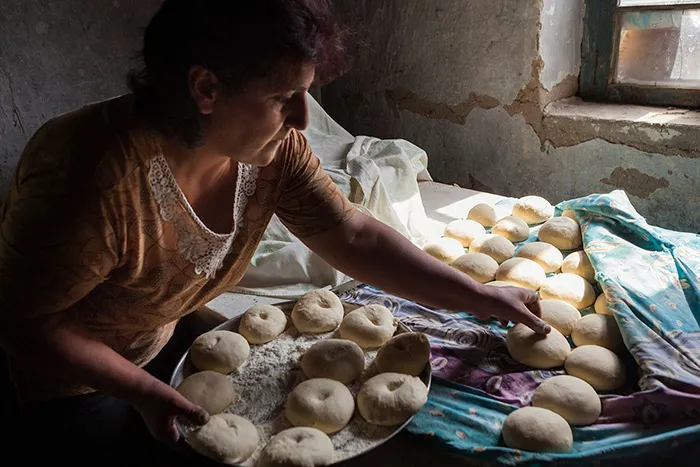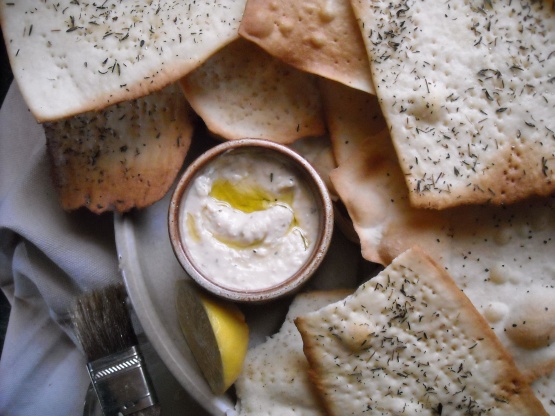Lavash
lavaş, lavas, լավաշ, nanê loş, لافاش ,لواش, ლავაში
Lavash is a thin flatbread usually leavened, traditionally baked in a tandoor (tonir or tanoor) or on a sajj, and common to the cuisines of South Caucasus, West Asia, and the areas surrounding the Caspian Sea. Lavash is one of the most widespread types of bread in Armenia, Azerbaijan, Iran and Turkey. The traditional recipe can be adapted to the modern kitchen by using a griddle or wok instead of the tonir. In 2014, "Lavash, the preparation, meaning and appearance of traditional bread as an expression of culture in Armenia" was inscribed in the UNESCO Representative List of the Intangible Cultural Heritage of Humanity. In 2016, making and sharing flatbread (lavash, katyrma, jupka or yufka) in communities of Azerbaijan, Iran, Kazakhstan, Kyrgyzstan and Turkey was inscribed on the list as well. Lavash is similar to yufka, but in Turkish cuisine lavash (lavaş) is prepared with a yeast dough while yufka is typically unleavened. Hrach Martirosyan tentatively connects Armenian lavash with dialectal լափ lapʿ, լուփ lupʿ, լովազ lovaz 'palm, flat of the hand', լափուկ lapʿuk, լեփուկ lepʿuk 'flat, polished stone for playing', լավազ lavaz 'very thin' and assumes derivation from Proto-Armenian *law 'flat'. He remarks that semantically this is conceivable since this bread is specifically flat and thin.
Source: Wikipedia
Recipes



:max_bytes(150000):strip_icc()/lavash-flat-bread-recipe-2355383-hero-01-3dd657148ccc41eca33a5217578394c6.jpg)
:max_bytes(150000):strip_icc()/Lavash1500-56a125dc5f9b58b7d0bc79cb.jpg)






:max_bytes(150000):strip_icc()/spaghetti-and-no-cook-tomato-tuna-sauce-95ac0e6b-0820-onecms-e802f73ecfeb4947ae7e72679c40c320.jpg)